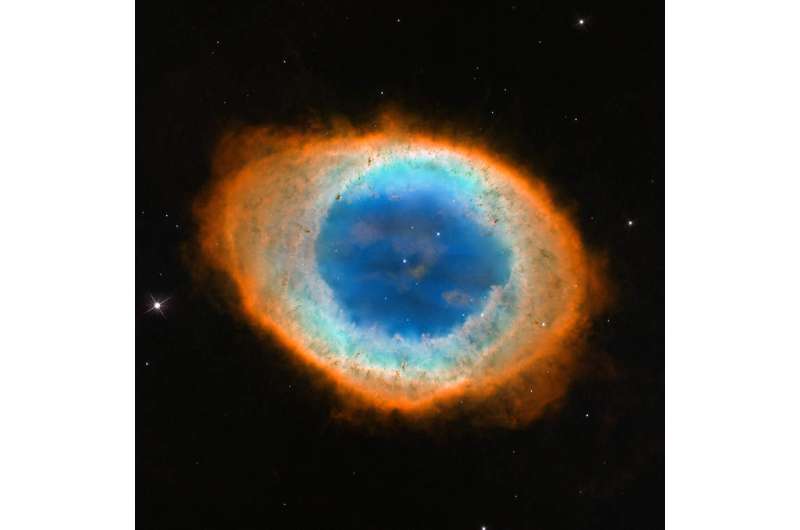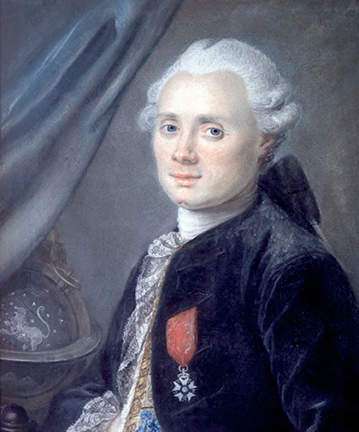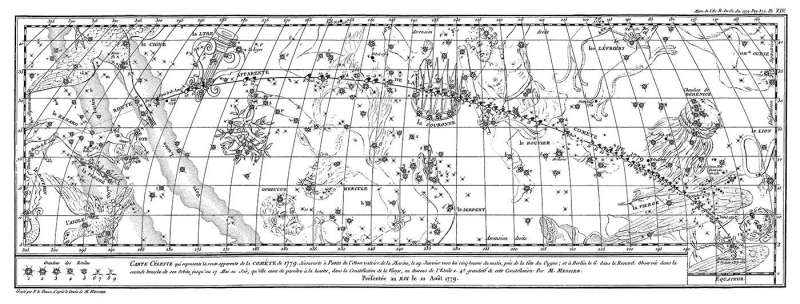'Celestial Sleuth' credits Messier with discovery 238 years after the fact

The Ring Nebula is one of the most spectacular deep-sky objects in the heavens. It is easily located by backyard astronomers, intensely studied by astrophysicists and relied upon for show-stopping images on countless book covers and calendar pages.
With an object so familiar, it's easy to forget that somebody had to first discover it. History credits 18th-century French astronomer Antoine Darquier with that accomplishment.
Now, a team of researchers led by Texas State University astronomer and physics professor Donald Olson has applied its distinctive brand of celestial sleuthing to the question and determined that Darquier's contemporary, Charles Messier, was actually the first person to observe and record the iconic Ring Nebula.
Olson and co-author Giovanni Maria Caglieris of Italy publish the findings in the June 2017 issue of Sky & Telescope magazine, on newsstands now.
Chasing comets with Messier
Today, Messier is remembered for his catalog of 110 deep-sky objects, of which the Ring Nebula is listed as M57. While the Messier Catalogue is used today to locate these deep-sky objects, its original purpose was to provide a list of objects for comet-hunters of the day to avoid. In fact, Messier first spotted the Ring Nebula on January 31, 1779, while observing the sky near the path of what would become known as Bode's comet:

"In comparing the comet to β Lyrae on this morning, I observed in the telescope a small patch of light … this patch of light was round and was located between γ & β Lyrae," Messier wrote in his notes.
Messier recorded careful measurements of the Ring Nebula's location, proving that he first observed the nebula before anyone else. Yet in his Catalogue, Messier's description of M57 states, "Darquier in Toulouse discovered this nebula, while observing the same comet."
Darquier's "discovery"
In the recent decades, a tremendous number of historical documents have become available online, giving researchers access to materials that otherwise might remain unknown and undiscovered. Darquier's papers are among this trove.
In a letter Darquier sent to Messier in September 1779, Darquier explained that he did not begin to observe the sky near the path of Bode's comet until the second week of February, when he read about Messier's own comet observations in the newspaper.
Darquier later created his own sky catalogue, in which the Ring Nebula was the only nebula included.

"In the course of my work, I encountered some nebulae, most of which are unknown;" he wrote, "but one which caught my attention is a nebula located between the two beautiful stars β & γ Lyrae."
Darquier's careful notes show that he could not have observed the Ring Nebula prior to February 10, 1779, more than a week after Messier observed it. How it is possible, then, to account for the discrepancy when Messier himself appears to credit Darquier for the discovery?
Fickle language
The confusion stems from language creep and lack of context. Messier's statement appears to be an endorsement of Darquier being the first person to spot the Ring Nebula. In the 18th century, however, "discover" more commonly meant to simply discern something, a use that is almost obsolete today.
Alternatively, Messier could have used "discover" to qualify Darquier's observations as a later, independent discovery. Messier himself uses "discover" this way in his memoir to describe his own Paris observations of Bode's Comet, even though Messier knew by then that Johann Bode in Berlin discovered the comet first.
Regardless of the definition used, Messier and Darquier's own notes settle the question once and for all: The Ring Nebula was first observed and recorded by Messier.
Provided by Texas State University





















